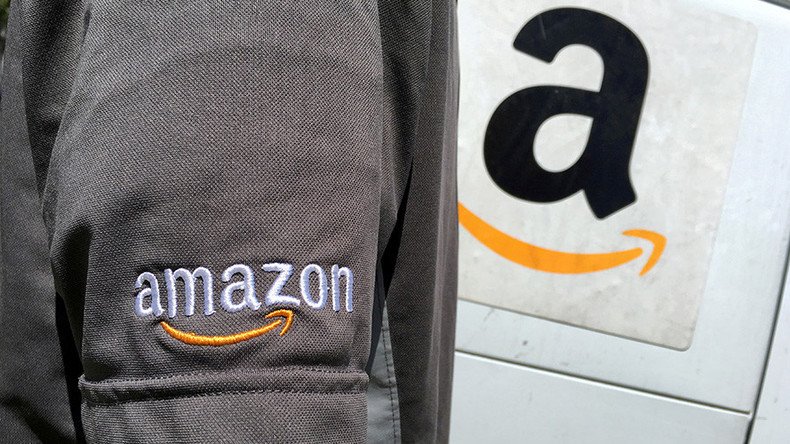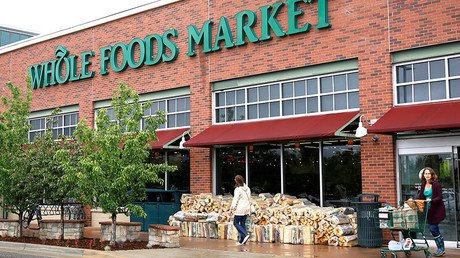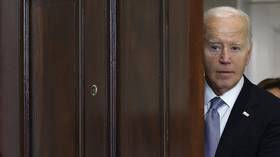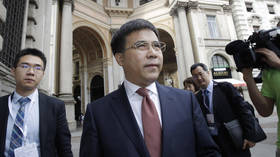Caveat emptor: Feds probe Amazon over illegal discounting

The Federal Trade Commission (FTC) is looking into allegations that Amazon misled customers about its pricing discounts on thousands of products. The probe is part of the agency’s review of the internet behemoth’s agreement to buy grocer, Whole Foods.
The FTC began looking into potential discrepancies in Amazon's pricing list after a recent Consumer Watchdog report, a source told Reuters.
The inquiry found that 61 percent of Amazon's products with reference prices were higher for the same product than what the company had sold in the previous 90 days, the Consumer Watchdog wrote in a letter to the FTC dated July 6.
After receiving the complaint, the agency made informal inquiries about the allegations, according to a source who did not want to named in order to preserve his business relationships.
FTC probing allegations of Amazon's deceptive discounting https://t.co/o3btcMRi9W#Reuters#ftc#Amazon#probe#discount
— Allenross356 (@allenross356) July 21, 2017
The FTC declined comment and it's not yet clear if the agency would open a formal probe into the allegations.
A report commissioned by the Consumer Watchdog and released in March, said Amazon’s markdowns are not as generous as they appear. Many of those are effectively nonexistent.
Are dark clouds heading straight for Amazon? https://t.co/Vbdq6ByDJi$AMZN
— TheStreet (@TheStreet) July 21, 2017
Nearly 40 percent of the 4,000 Amazon products the Consumer Watchdog looked at used references or list prices that were not charged by other retailers, according to the report’s findings.
That rose to 46 percent in cases when Amazon Marketplace vendors were excluded from the sample of Amazon’s competitors, the report found. On average, the Amazon reference overstated the median market prices by $22, or about 20 percent.
“In other words, Amazon highlighted an entirely fictitious reference price charge by no one,” the report read.
Under federal regulations, retailers using reference prices are required to reflect the prevailing market price; they cannot cherry-pick the highest competitor’s price.
The e-commerce giant has 224 million regular customers and annual sales of more than $135 billion based on the promise of fast delivery and hot deals.
“Amazon has for years relied heavily on often species ‘list prices’ to give consumers the impression they were getting a great deal when they weren’t,” stated the report.
“That practice began to shift last year, when Amazon – under widespread legal challenges – started quietly phasing out the use of ‘list prices’ meant to reflect a product's standard retail price from which Amazon was discounting!”
Amazon said the Consumer Watchdog's study was "deeply flawed."
"The conclusions the Consumer Watchdog group reached are flat out wrong," Amazon said in a statement. "We validate the reference prices provided by manufacturers, vendors and sellers against actual prices recently found across Amazon and other retailers."
Amazon and other retailers have been sued over its list pricing. A 2014 class-action lawsuit filed against Amazon in California alleged deceptive pricing under state law and federal regulations.
The case was originally brought by a consumer who purchased a Vitamix blender from Amazon for $299, ostensibly a discount from Amazon’s $329 list price. The consumer later learned that several other online retailers also offered the blender for $299.
Amazon is seeking individual arbitration with the buyer in the case.
The review of Amazon’s discount pricing indicates the FTC is taking a serious look at the e-commerce giant’s agreement to buy Whole Foods, a deal that critics say could give Amazon an unfair advantage, Reuters reported. The company is planning to buy the nationwide grocer for $13.7 billion.













